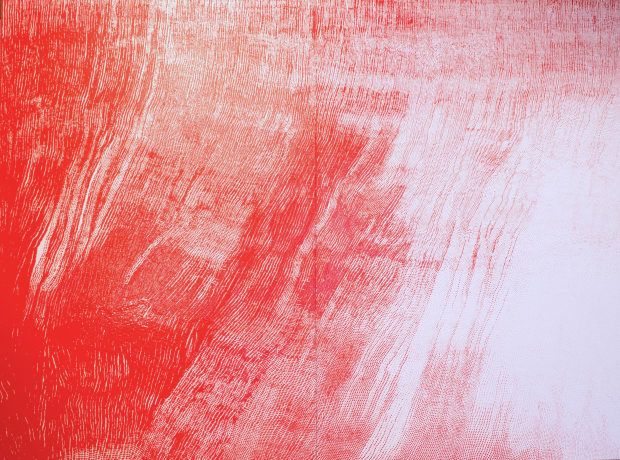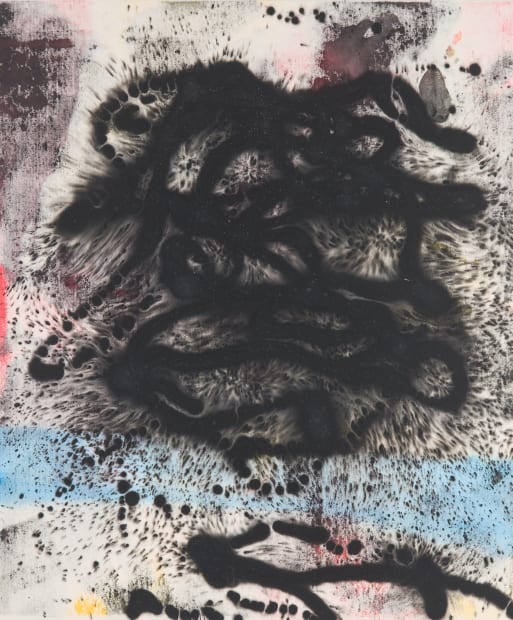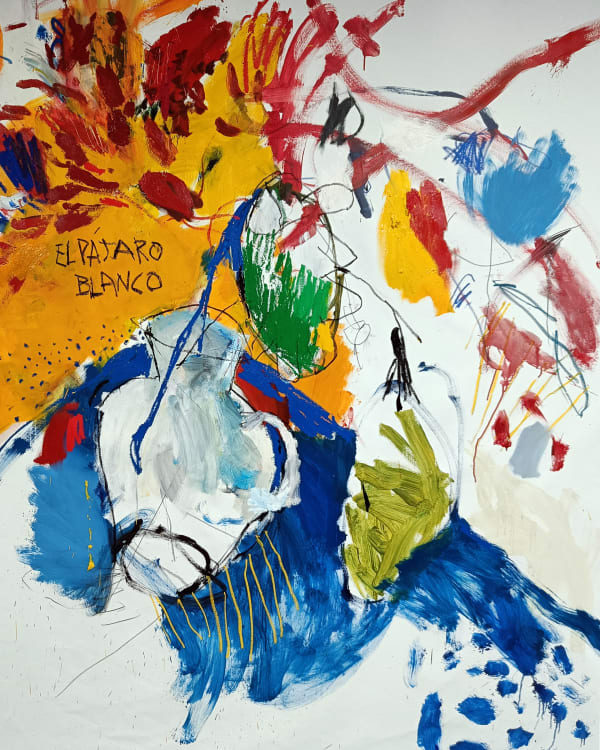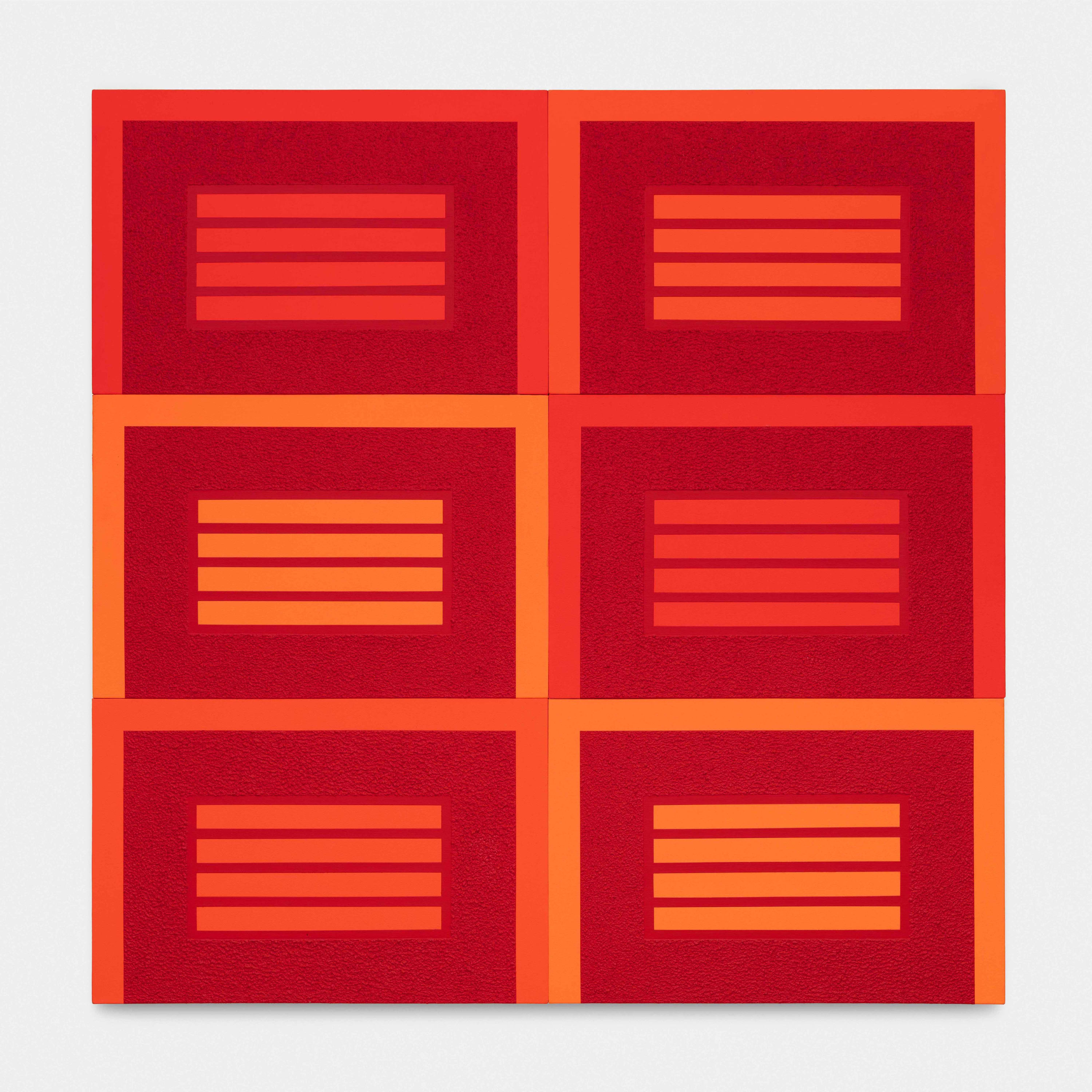-
Simeti to Yamato: The Rhythms of Abstraction brings together key artworks from both the ‘maestros’ and ‘tyros’ of abstract art spanning the past 50 years. Showcasing the well-known aesthetics of Turi Simeti, Peter Halley, Ugo Rondinone, Ed Moses and Damien Hirst, alongside paintings by younger artists from the gallery’s roster, Andy Moses, Katrin Fridriks, Luis Olaso, Santiago Parra and Mio Yamato, the exhibition seeks to capture the dynamism forged between varying languages of abstraction, where paintings exist not just as single entities but as an active experience of colour, shape, and rhythm.This exhibition not only presents a rare opportunity to explore the convergence of renowned and emerging voices in abstract art but also provides collectors with the chance to acquire works being publicly shown for the first time alongside pieces already featured in prestigious international exhibitions.
-
 Turi Simeti, Quadrato su quadrato (Square on square), 1972, Acrylic on canvas 132.5 x 132.5 cm 52 1/8 x 52 1/8 in
Turi Simeti, Quadrato su quadrato (Square on square), 1972, Acrylic on canvas 132.5 x 132.5 cm 52 1/8 x 52 1/8 in -
 Mio Yamato, Repetition Red (dot) 48, 2018, Oil on canvas, 194 x 260 cm
Mio Yamato, Repetition Red (dot) 48, 2018, Oil on canvas, 194 x 260 cm -
 Ugo Rondinone 5. September, 2007, 2007, Acrylic on canvas and Plexiglass plaque 220 x 220 cm
Ugo Rondinone 5. September, 2007, 2007, Acrylic on canvas and Plexiglass plaque 220 x 220 cmThe Hypnotic Ugo Rondinone
Ugo Rondinone’s work is characterised by its vibrant and meditative qualities, often reflecting his exploration of visual and emotional dichotomies. Their chromatic brilliance and use of circles, create a hypnotic and ethereal visual experience. Crafted from coloured glass, their luminous and reflective properties, invite viewers to contemplate their form and colour in a manner that evokes both the celebratory and the melancholic. -
 Ed Moses, Samba, 2008, Acrylic on canvas, 182.9 x 152.4 cm
Ed Moses, Samba, 2008, Acrylic on canvas, 182.9 x 152.4 cm -
 Andy Moses, Morphology 1411, 2019, Acrylic on polycarbonate mounted on concave wood panel, 122 x 213 cm
Andy Moses, Morphology 1411, 2019, Acrylic on polycarbonate mounted on concave wood panel, 122 x 213 cm -
The exhibition juxtaposes pioneering styles from 20th and early 21st-century movements in abstraction such as ‘Light and Space’, ‘Zero’ (also known as the monochromatic movement), ‘Neo-Conceptualism’ (also known as Geometric art) with innovative approaches of today. Ed Moses’ iconic experimental mark-making, Halley's geometric precision, Simeti's minimalist elegance, Rondinone's multi-media depth and Hirst’s dynamic spin motifs set a masterful tone for the exhibition. These artists, whose works are prominently featured in world-class museums such as The Museum of Modern Art in New York, Tate Modern in London, and the Centre Pompidou in Paris, underscore their global significance. Their pieces, sourced from artist estates and private collections, provide the starting point for a rich dialogue with newly created abstract paintings from the gallery roster.The transhistorical fusion at play in this exhibition demonstrates the exploratory thread of rhythm in abstraction in which visual and auditory patterns have been created through repeated shapes, textures, colours, and movements. The newest artworks made between 2018 and 2024, evoke movement or rhythm across their surface, as demonstrated through highly textured and enlivened surfaces of Santiago Parra’s work made by just a single brushstroke, or the repetitive ‘drip’ markings by Mio Yamato. Others suggest rhythmic potential through interlocking forms composed across different planes of light and colour, such as the swirling compositions of Andy Moses’ canvases or the kinetically painted work of Luis Olaso and Katrin Fridriks. Collectively, the artworks demonstrate how abstract artists can thoroughly engage with structural, spatial, and geometric principles, questioning categories of craft and art imposed by modern art history.
-
-
 Peter Halley, Untitled (Six Prisons), 2005
Peter Halley, Untitled (Six Prisons), 2005 -
 Turi Simeti, Quadrato su quadrato (Square on square), 1972
Turi Simeti, Quadrato su quadrato (Square on square), 1972 -
 Ed Moses, Samba, 2008
Ed Moses, Samba, 2008 -
 Luis Olaso, Composition for a bouquet of flowers, 2023
Luis Olaso, Composition for a bouquet of flowers, 2023 -
 Luis Olaso, Composition for a white ceramic vase with flowers, 2023
Luis Olaso, Composition for a white ceramic vase with flowers, 2023 -
 Santiago Parra, Untitled, 2023
Santiago Parra, Untitled, 2023 -
 Mio Yamato, Repetition Black (line) 8, 9 Diptych, 2019 Sold
Mio Yamato, Repetition Black (line) 8, 9 Diptych, 2019 Sold -
 Mio Yamato, Repetition Red (dot) 48 Diptych , 2018 Sold
Mio Yamato, Repetition Red (dot) 48 Diptych , 2018 Sold -
 Ed Moses, Empty Womb, 2017
Ed Moses, Empty Womb, 2017
-
-
 Santiago Parra, Untitled, 2023, Acrylic on canvas, 106.5 x 163 cm
Santiago Parra, Untitled, 2023, Acrylic on canvas, 106.5 x 163 cm -
 Luis Olaso, 'Composition for a blue banana tree, 2023, Oil, acrylic, oil bar, oil pastel on canvas, 200 x 160 cm
Luis Olaso, 'Composition for a blue banana tree, 2023, Oil, acrylic, oil bar, oil pastel on canvas, 200 x 160 cm -
 Peter Halley, Untitled (Six Prisons), 2005, Acrylic, day-glow acrylic and roll-a-tex on canvas, 183 x 183 cm
Peter Halley, Untitled (Six Prisons), 2005, Acrylic, day-glow acrylic and roll-a-tex on canvas, 183 x 183 cmGeometric Abstraction - Peter Halley
Peter Halley is a contemporary American artist who gained extensive praise for his vibrant neon-coloured geometric paintings, often featuring barred windows, prison cells, and grid-like structures as focal points. Influenced by philosophical thinkers Foucault and Baudrillard, Halley views geometry as a metaphor for society, saying that what once provided stability, order, and proportion has now transformed into a symbol of confinement, or what he calls the ‘geometricization of modern life’.
-
 Katrin Fridriks, Indigenous Startraveller, 2024, Acrylic on canvas, 100 x 100 cm
Katrin Fridriks, Indigenous Startraveller, 2024, Acrylic on canvas, 100 x 100 cm -
 Damien Hirst Untitled Painting Spin Circle for Mark, 2022 Acrylic on paper, 52 x 52 cm
Damien Hirst Untitled Painting Spin Circle for Mark, 2022 Acrylic on paper, 52 x 52 cm -
Jean-David Malat shares his enthusiasm:
“By bringing together established masters and emerging talents, we created a new constructive dialogue. It’s extraordinary to witness the unfolding of the visual connection between the works of world-renowned masters and those of the JD Malat family. We believe that our artists, even in the earlier stages of their careers, possess the potential to rise to the same degree of recognition, showcasing similar traits of innovation and distinguished visual language.” -
 Mio Yamato, Repetition Black (line) 8, 9 Diptych, 2019, Ink on canvas, 150 x 400 cm
Mio Yamato, Repetition Black (line) 8, 9 Diptych, 2019, Ink on canvas, 150 x 400 cmMother Nature in Black and White
Yamato showcases her ability to create and manipulate material form through the repetitive use of geometric lines. Her meticulous application process sees her generating images resembling natural forms. This composition imitates a range of mountains topographically embedded in the canvas, it also harnesses the energy of water, as her fine lines emulate the powerful energies of waves. Yamato carefully grows her compositions over time, organically visualising mother nature and her systems. -
While varying transcultural exchanges led these artists to develop unique languages of abstraction, together, they unveil the enduring presence of rhythm in their respective artistic methods and offer a renewed appreciation for both the legacy and future of abstract and geometric art.
Simeti to Yamato: The Rhythms of Abstraction
Past viewing_room




















